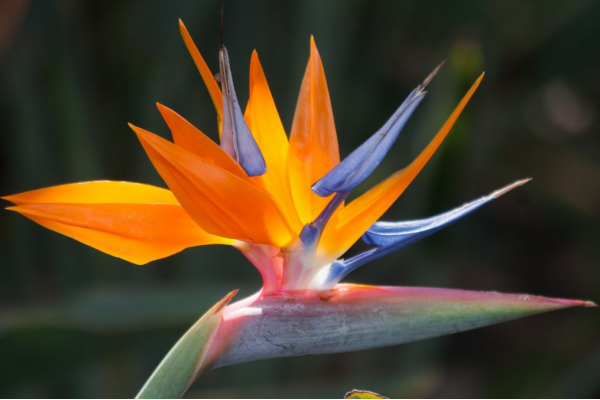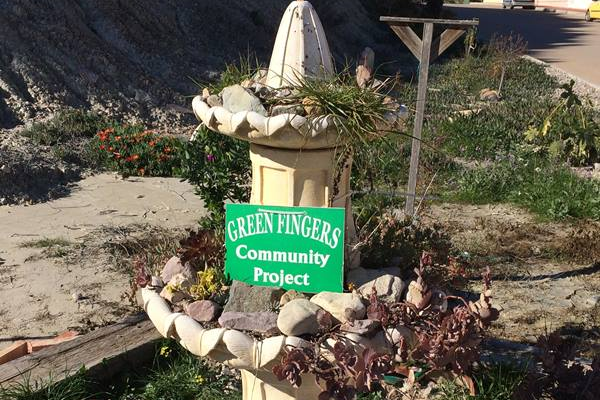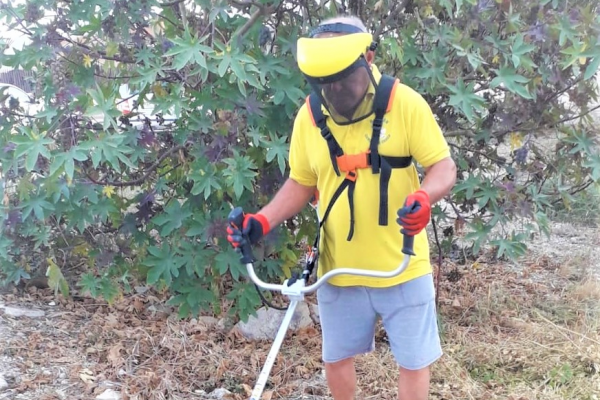
Drip Irrigation
You probably know this already, but it’s pretty sunny here in Spain, particularly in Murcia. For gardeners on anything but the smallest scale, that’s a problem.
The first part of making drip irrigation system is design. Plan a route for a ‘main line’: from the water tap and around the garden. This will be a semi-flexible black plastic pipe which 25mm (an inch) diameter. You can bury it under garden paths, but you’ll want to run it on the surface near the plants themselves. The reason for running it on the surface is that you will be wanting to tap into it to add ‘fingers’ of smaller diameter, more flexible tube that takes water to individual plants or groups of plants. At each tree, or group of plants, you will attach a ‘dripper’ (dripper for trees and large shrubs, spray for herbs, etc
Consideration needs to be taken if you are planning to feed the irrigation by gravity (from a water butt from your gutter downpipe or from a tank of irrigation water). Since your water is not coming directly from a drinking water quality tap, a filter is even more important than ever. You will need ‘pressure compensating’ emitters. These widgets give out the same amount of water, regardless of the pressure in the supply pipe. They are rated in terms of litres per hour (for example 4 l/h), usually embossed on the emitter itself. They aren’t much more expensive than other emitters, so it’s probably worth using them in all installations anyway.
Finally, you will need some kind of head on the water, the more the better, so if you can make sure that there is at least a metre, preferably a couple of metres of head between the bottom of your tank and the first emitter, the system should work well. You can achieve this by putting the tank up on concrete blocks.
Spanish Glossary
Irrigation – riego
Drip Irrigation - riego por goteo
Dripper / Emitter - goteo / emisor
Pressure Compensating – autocompensante
PE – politeleno
Tank – deposito
Tube – tubo/tubería
Hose – manguera
Filter - filtro
Elbow – codo
Tee – te
Coupler – manguito
Stop cock / gate valve – llave de paso
End stop – tapón
Big white cube thingys – cubo de mil litros de segunda mano (para hacer un
Materials
From the tap to get on to the tubing. Then it’s a good idea to add a timer-valve. Next, you’ll need a filter so your drippers don’t clog up. Then you’ll need the 25mm polyethylene (PE) pipe and at least one end-stop. You may also want some tees. You can buy the 25mm PE pipe by the metre. The same goes for the 12mm PE pipe you will need for the ‘fingers’.
You will need some inserts that let you plug the 12mm pipe in as a ‘T’ to the 25mm pipe. At the ends of the 12mm pipe, you will need end stops You will need drippers / sprayers.
If you are making a gravity-fed system you will need a water tank. We found that the white, metal-caged, thousand litre, metre-square plastic cubes (as seen all over the countryside!) that are second-hand containers from ‘things like hydraulic oil are perfect. You should pay about €50 each, plus delivery charges
You will need some tools, a saw for cutting the tube, a pair of pliers for pushing the fittings into the tube, a pair of pipe grips for doing up the fittings on the thicker tube and, more specialised, hole punches for puncturing the tubes (different sizes depending on whether you are teeing off from the main line into the fingers or you are adding drippers to the finer tube itself).
You will need to get rid of the remaining gunk that was shipped in the container. Then a good dose of washing up liquid, some coarse gravel, a few buckets of water and a helping hand to roll the cube around will clean out the insides.
You will need to cover the cube up, not just because they are unsightly, but UV rays from the sun will destroy the plastic when the cube isn’t completely full of liquid. Black plastic sheeting (to stop the UV) covered by hessian should do the job.
Connect the cube’s tap to your irrigation pipework – for this you will need a special fitting that comes from a drinking water container – your fereterría or almacén should know the problem well since the thread on the tap is ‘weird’ but it’s a common problem. The special fitting usually needs some extra-thick PTFE tape or hessian and plumbers mait to stop it leaking..
Installation Tips
- Install the pipes and fittings when it’s warm and sunny: The PE pipe is almost rigid when cold and very difficult to straighten out or to puncture for adding fittings.
- Pressure Reducer: If you are running your system from mains water (a garden tap), you may need to install a pressure reducer just after the filter.
- Flush your system: You don’t want to have to re-install all those drippers if a handful of grit makes its way to the ends of the pipes. Lay out the pipes, make all the tees, install the filter but don’t connect any drippers or install any end stops yet. Start the water supply to flush things through. Then install the emitters and end plugs (stop the water first!)
- If your system keeps blocking: If your drippers keep blocking, it's probably down to hard water. Farmers periodically flush their systems out with dilute hydrochloric or nitric acid. You can install a reverse osmosis water softener at/before the garden tap - expensive but effective.


